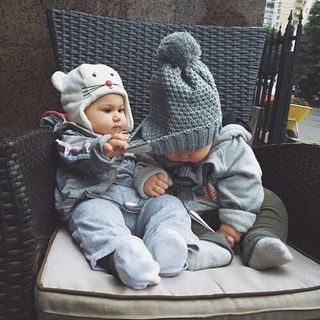New research is shedding light on how empathy develops through the brain activity of 7-month-olds, suggesting parenting might be less about instilling empathy from scratch than teaching children how to use their biological instincts.
“Long before babies acquire spoken language, touch is a crucial channel of communication between caregivers and babies,” said Andrew Meltzoff, a UW psychology professor and lead author of the study published in Developmental Science. “Now we have the tools to see how the baby’s body is represented in the baby’s brain. This allows us to catch the first glimpse of a primitive sense of self that provides a building block for social learning.”
Researchers observed brain activity in 7-month-old babies that distinguished between “felt touch” and “observed touch,” showing even by young that age, infants have already made a basic connection between “self” and “other.” Researchers say this lays the groundwork for imitating and learning from the behavior of other people, and for empathizing with them.
For the study, researchers used a magnetoencephalography (MEG) machine to capture images of brain activity in 7-month-old infants as they were touched on the hand and foot, and as they watched videos of an adult hand and foot being touched. As expedcted, when an infant’s hand was touched, the hand area of the somatosensory cortex (a brain region that roughly runs in a strip between the ears, over the top of the head, and processes the sense of touch in different places and at different intensities) was activated in all 14 infants tested; when the foot was touched, activation occurred in the foot area of the brains of all of the infants but one. Also as expected, the babies had a weaker response to “observed touch” in the same, related brain regions. The same is true of adults: A touch to your own hand is going to generate greater brain activity in the somatosensory cortex than merely seeing the touch to someone else’s hand.
While the findings were ‘as expected,’ that is precisely the key (and perhaps surprising) insight, Meltzoff explained: The same part of the infant’s brain registered both kinds of touch, indicating a baby’s stunning early capacity for recognizing the similarity between their own body parts and those they see in other people.
This ability plays into how babies learn, Meltzoff said. Imitation is a powerful learning mechanism for infants, but in order to imitate, infants have to perceive how body parts correspond. In other words, they need to reproduce the same movement with the same part when they imitate what their parent is doing.
“Before they have words for the body parts, babies recognize that their hand is like your hand, and their foot is like your foot,” Meltzoff explained. “The neural body map helps connect babies to other people: The recognition that another person is ‘like me’ may be one of the baby’s first social insights.”
With development, this “like-me” recognition eventually flowers into feeling empathy for someone else. If you see someone accidentally hit their thumb with a hammer, you rapidly, if perhaps imperceptibly, recoil by moving your hand. This is where a shared neural body map that connects self to other comes into play.
“The idea of using brain science to study how and when humans first feel a sense of connectedness with others is important and fascinating,” Meltzoff said. “We can now look under the hood and see what’s happening when a baby watches and connects to others. It’s a touching sight.”




